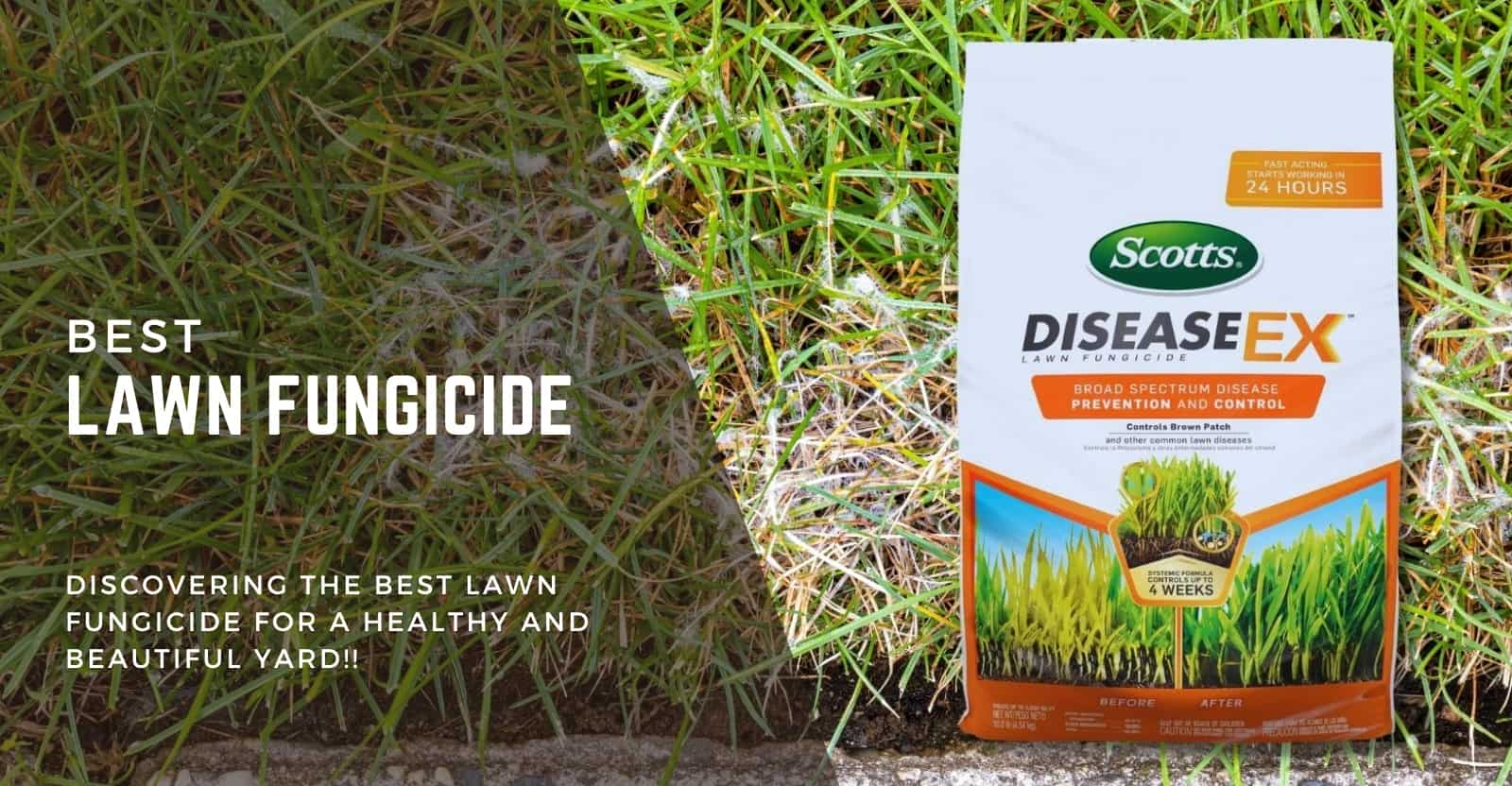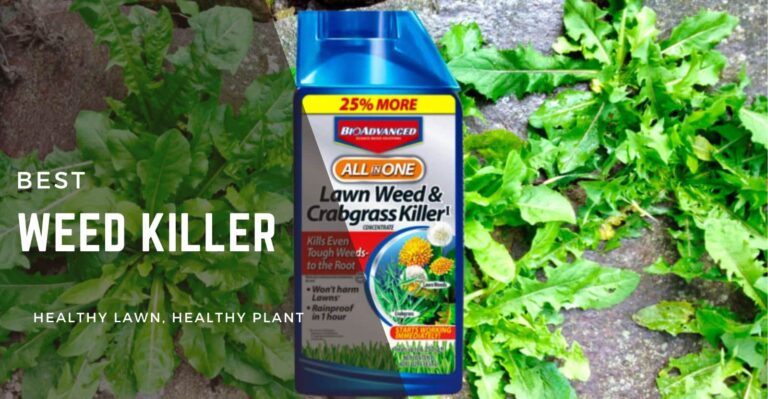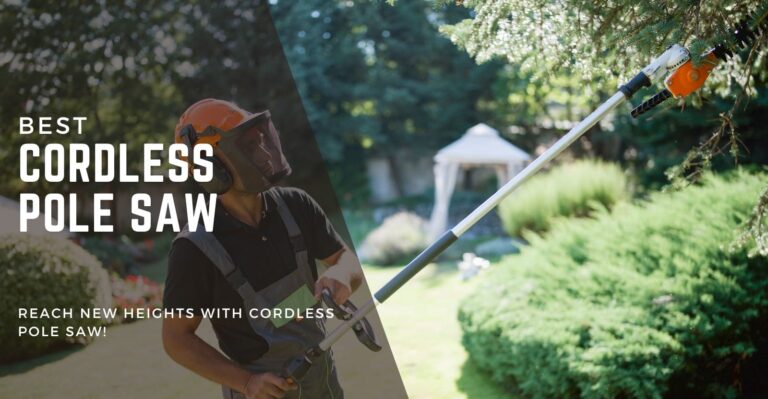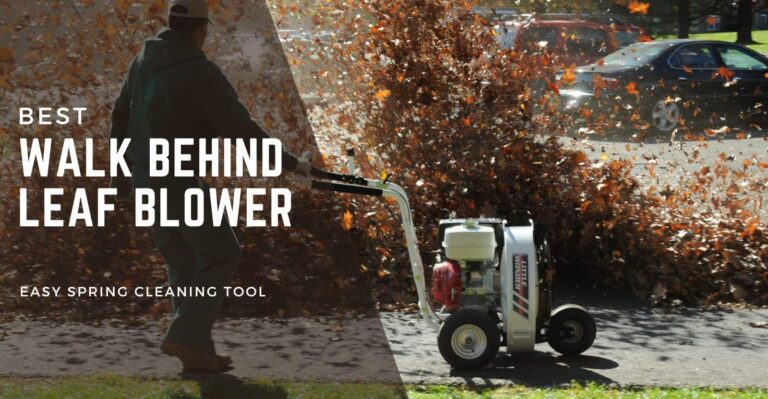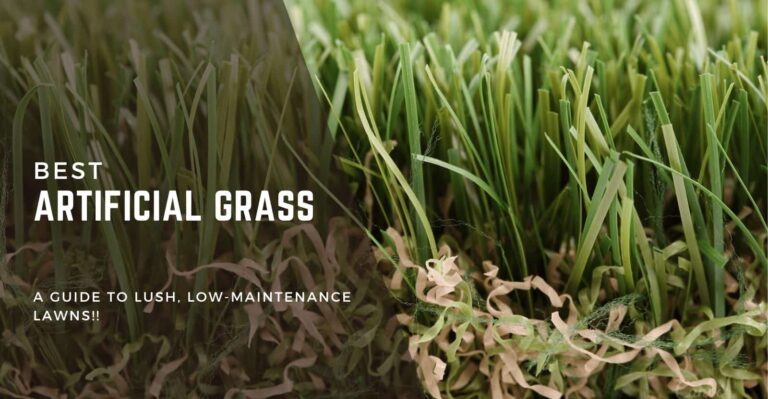Amazon has put together some great Home Gift Deals – save money and get your shopping done at the comfort of your home! Click here to see deals on Amazon
For most people, the lawn and garden are the most visited part of the home. But some may feel that maintaining a lawn is a chore that they must keep doing. Giving your yard a regular dose of fertilizer and pesticides will help it thrive, but it may not be enough.
Some other methods may be more effective, such as applying lawn fungicide, which is an excellent way to maintain your lawn healthy and look great. There are hundreds of fungicides on the market today, each with its pros and cons.
Some work great for certain types of lawns, while others can damage them. Knowing which one to use and when to apply is a big part of gardening and landscaping success. We have covered the five best lawn fungicides that you can choose to maintain a healthy lawn.
What causes the lawn fungal disease?
The lawn has millions of organisms and fungi spores where some are harmless, and some can be detrimental. They often grow in weather conditions, such as after prolonged rainfall when humidity becomes high and the temperature rises.
You must identify the correct cause of lawn fungal disease before starting any commercial or homemade plant fungicide treatment plan. Here are some of the most common reasons to have lawn fungus growing on your lawn and ornamental plant.
Change in the temperature
On a hot and humid day, when the daytime temperature remains above 75°F to 90°F (23°C – 32°C) and the nighttime temperature stays below 65°F (18°C), the fluctuation in temperature with high humidity causes the shock to turfs.
It weakens the roots to make the lawn grass more susceptible to fungus, brown patch disease, and molds.
You may start to notice irregular patches of brown and dead grass across the lawn. Most often on the grass blades where the orange rust-like color begins to appear. Both cool-season and warm-season grasses are affected by these problems.
Poor soil condition
The overall health of soil plays a crucial role in keeping your lawn free from fungi. Soil that is more acidic with a pH level of less than 6 increases the risk of developing fungus.
You can add lime to amend the soil and keep it at a neutral level. You can use any cheap soil pH tester to measure the pH level.
Spread from infected lawn clippings
If you get infected lawn clippings blown in your yard from neighbors’ lawn, it becomes highly likely that your yard is going to be infected as well. Unfortunately, this is often overlooked reason by homeowners. However, if you take care of this when you notice this problem, it becomes easy to contain.
I learned that the lawn clipping was a source of lawn fungus in my yard last summer. The fungus had been spreading across the community in the form of brown patches across the neighborhood. By identifying and treating it right away with fungicide application, it helped stop the fungal spread.
Mowing grass too short
New gardeners often make a mistake when adjusting the height of a lawnmower. Garden experts recommend mowing at a high setting that leaves you with 3-4 inches tall grass. You can further adjust this setting depending on the grass type.
As a general rule, the grass shouldn’t be mowed more than 1/3 of its height. You should also keep the mower blade sharp for a clean cut. This helps the grass blade to heal quickly and reduces the risk of fungal infection. You can follow these mower settings depending on the grass type.
| Grass Type | Mowing Height |
|---|---|
| Bermuda Grass | 1.5 to 2 inches |
| Zoysia Grass | 2 to 3 inches |
| Fescue Grass | 2.5 to 3.5 inches |
| Centipede Grass | 1.5 to 2 inches |
| All other grass types | 3 to 4 inches |
Improper watering
Fungus likes to grow in humid condition, and wet grass blade is often the ideal ground for the disease to develop. Therefore, you shouldn’t overwater your lawn and maintain a proper irrigation schedule. Instead, let the grass become dry between the watering schedule.
It’s recommended that people should water their lawn early morning between 6 a.m. and 10 a.m. as it gives the grass enough time to get dry during the day.
You should avoid watering in the evening as it causes the grass to remain wet overnight that encourages fungal growth.
You should also provide good drainage to let excess water runoff from the surface. Also, maintain proper soil compaction with core aeration. Finally, remove any excessive thatch buildup that may cause water to collect at certain spots.
Lack of balanced lawn nutrients
Nutrients are a critical part of a healthy lawn, and it’s also the most overlooked part of lawn care. A lack of nutrients causes the grassroots to weaken. You must maintain a balanced nutrient level as over or under fertilization may drive the growth of the fungal disease.
If you’re using other pesticides or weed control solutions, it may disbalance the lawn ecosystem that may cause the fungus to grow.
For example, you shouldn’t use fertilizers with high nitrogen levels on cool-season grasses. The nitrogen encourages the fungus to grow. If needed, choose a slow-release nitrogen fertilizer.
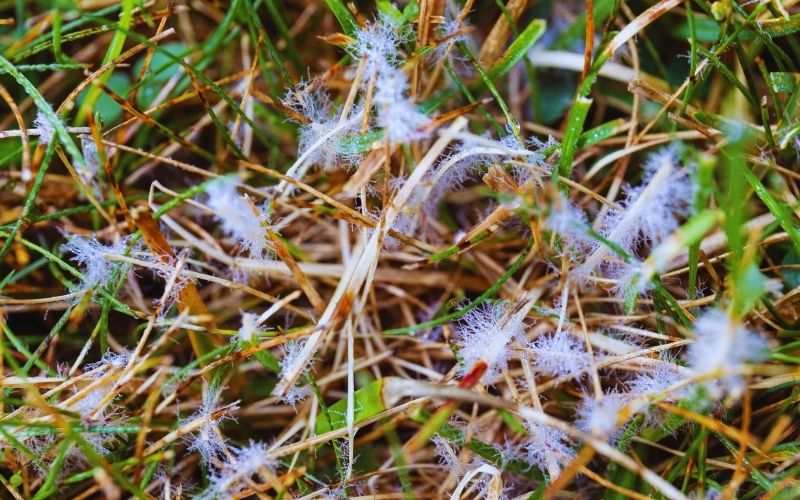
How can you identify lawn fungal disease?
A few years ago, the fungus that caused white mold or “fungus gnats,” also known as “haywire,” was one of the worst infestations in the lawn-care industry.
This was due in part to the widespread use of pesticides but also due to the fact, these lawn pathogens are often resistant to application forms.
The following table includes the most common types of fungal disease.
| Fungus Type | Symptoms |
|---|---|
| Stalk Rust | It leaves orange or black stains on the leaves that become dry. The prevention includes regular aeration, correct mowing height, and applying a balanced fertilizer. |
| Powdery mildew | This is often found during the fall where the grass leaves become covered with a white fungal layer. The prevention includes removing overhanging tree branches that block sunlight and using a balanced fertilizer. |
| Snow Mold | It’s a common disease that occurs during the cold season and wet weather. The infected lawn has a large circular washed-out patch with white or pink mold on the grass. Apply fertilizer with low nitrogen levels and treat soil with phosphoric acid for lawn fungus control. Keep mowing at medium height and remove clippings to prevent infection. |
| Fair Circles Witch Ring | You can often find it in soil rich in organic matters such as compost or decaying leaves. It causes brown or yellow stains to appear on the turf. For prevention, keep the ground dry by leaving a gap between the watering schedule and applying balanced fertilizer. |
| Helminthosporium | This fungal grows aggressively during spring and summer due to high humidity and temperature on most types of lawns. The brown spots appear on the grass leaves that eventually turn into yellow patches. For prevention, don’t cut the grass too short and apply low nitrogen fertilizer. |
| Anthracnose fungus | It kills the grass blade leaves and also affects the lower stem and root. It turns the grass blade yellow and grows aggressively in drought and excessive heat. |
What is the best fungicide for lawns?
Fungicides are commonly used to control and kill the various fungi that inhibit healthy yard growth. They can be helpful against mildew, black spots, rust, and white mold. We find the Scotts Disease Ex Lawn Fungicide to be the overall best fungicide for lawns.
It kills fungi by weakening or killing the cells in which they live and multiply. These are fairly effective ways of controlling a few common fungal diseases, but many others aren’t susceptible to fungicide control.
However, you should also know that fungicides can’t always fully treat grass or plants already affected by the disease. But you have a better chance to prevent infection with the timely application of fungicide.
Check out the active ingredient in fungicide and its suggested use.
| Active Ingredient | Description |
|---|---|
| Dicarboximide | This is a systemic fungicide that works within the plant to control the fungus. Effective on brown and large patched grass. |
| Propiconazole | These come in granules and work effectively on the brown patch or any large patched grass. |
| Fluoxastrobin | Effective on Brown patched grass and gray leaf spot. Methyl Benzimidazole Carbamate (MBC): This systemic fungicide prevents infection by preventing plant cell division. |
| Pyraclostrobin | This is effective in controlling most types of fungi, including pathogens such as Septoria tritici. |
| Myclobutanil | This is a potent fungicide to treat lawn problems but banned in several countries for cannabis cultivation due to its toxicity. |
| Phenylacetamide | This is effective against powdery mildew fungus and works as a systemic fungicide. |
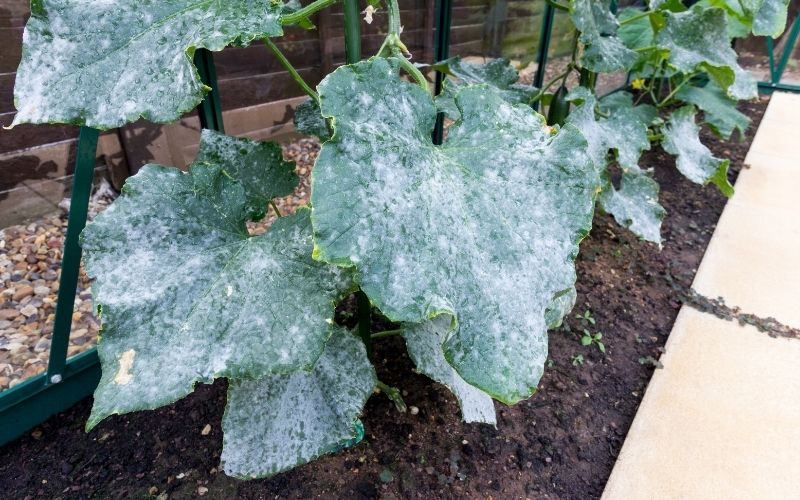
Best Lawn Fungicide For Your Lawn
1. Scotts Disease Ex Lawn Fungicide
Scotts Disease Ex Lawn Fungicide is a fast-acting, systemic fungicide to treat brown patches and other common lawn diseases.
This fast-acting, broad-spectrum fungicide controls up to 26 different types of diseases on contact. It can cover up to 5,000 square feet of area.
Not only does it start working in 24 hours, but it also works for up to 4 weeks or until there’s heavy rain. With broad-spectrum disease prevention and control, you can keep your lawn green, healthy, and full of life.
You can apply it in fall through early spring, depending on the weather. For example, you can use it on warm-and-cool season grass. This fungicide effectively controls fungi such as big patches, brown patches, dollar spots, fairy rings, leaf spots, and tip blights.
2. Honor Guard Broad Spectrum Fungicide
Do you need a potent fungicide to get rid of pesky summer patch fungi and control a large spectrum of grass disease? Then, honor Guard Broad Spectrum Fungicide is the perfect fit.
This advanced formulation provides up to 14 days of protection. You can use it in plantations, turf grasses, ornamental beds, conifer farms, nurseries, soil application, and other listed areas.
One bottle can treat up to 1,000 square-foot areas with just 0.5 ounces per gallon of water. That’s a whole lot of fungus-fighting power. You can protect your landscape from disease and pests with this contact action fungicide that will kill fungi spores and any fungus growing at the roots.
Propiconazole is an active compound that inhibits the growth of fungi such as Pythium, Rhizoctonia, and Sclerotinia. The formula contains 14.3% Propiconazole and can be used in plantations, turf grasses, ornamental beds, conifer farms, nurseries, and other listed areas.
In addition, use it to control other common lawn diseases such as black spots, powdery mildew, and rust.
3. Pillar G Intrinsic Granular Fungicide
Pillar G Intrinsic Granular Fungicide is a broad-spectrum, systemic soil fungicide to control numerous turf diseases. It delivers excellent disease control on dollar spots, anthracnose, brown patch, large patch, leaf spots, and snow molds.
It’s a combination of two potent active ingredients, pyraclostrobin and triticonazole. These two ingredients provide excellent disease control. You can easily apply it to turf and plant surfaces for effective fungal management.
It’s a water-soluble, granular fungicide with the active ingredient metalaxyl. This fungicide has a unique formulation on a clay granule which is designed for excellent spreading.
The active ingredient pyraclostrobin moves quickly off the granule to protect turfgrass soon after application. As a result, Pillar G Intrinsic brand fungicide controls more diseases than other competing granular products.
Additionally, you can use this on most turfgrasses for both lawns and golf courses. This product provides healthier and higher-quality turf because it’s so effective during stressful periods.
4. Strobe Pro G Granular Fungicide
Strobe Pro G Granular Fungicide is a broad-spectrum fungicide for the control of turfgrass plant diseases. It contains a combination of two curative and preventative fungicides, Azoxystrobin and Propiconazole.
It kills and prevents the growth of unwanted plants. It’s an advanced broad-spectrum fungicide for turfgrass plant diseases.
The combination of two broad-spectrum fungicides provides the same control as Strobe Pro Fungicide but is available in granular form. The granules are easy to use and can be applied by spreader or by hand.
The active ingredient Azoxystrobin interferes with the normal respiration of the fungus, and Propiconazole is known to help prevent cell membrane from forming.
This is one of the most influential and long-lasting fungicides on the market. It works on a broad range of fungus diseases and is suitable for ornamental and edible plants. It will effectively control Powdery Mildew, Leaf Spot, and Rust.
5. Grower’s Ally Fungicide
Grower’s Ally Fungicide is a natural, broad-spectrum, organic plant fungicide that prevents and kills powdery mildew on all plants. When used as a preventative treatment, citric acid forms a protective barrier on the plant’s surface to inhibit pathogen development.
It’s also a natural disinfectant with no adverse effects on plant tissue or blossoms. Adding this plant disease control spray to your routine will give your plants the best defense against this troublesome disease. It reduces bacterial growth yet is gentle on plant tissue.
It’s a safe and easy way to control fungi and bacteria on plants. It can help you to eliminate powdery mildew and other disease-causing pathogens while also preventing its recurrence. Plus, it’s food-grade citric acid and formulated without any synthetic pesticides or heavy metals.
It’s FIFRA 25(b) exempt, OMRI Listed for use in organic gardening, and tests clean with no residual solvents. This means it’s safe to use around vegetable and edible plants to maximize your crop yield.
How can you prevent lawn fungal disease?
Fungal disease is a serious problem. It attacks and destroys the roots and blades that will eventually kill your grass. It spreads quickly from infected soil or plant to plant and is only controlled by the proper use of fungicides.
You can know when the lawn becomes infected as it often leaves brown patches and yellowing turfs. All it takes is a week or two of heavy rain for the fungus to get developed.
But what if you could prevent these lawn ailments before they started? The good news is that it’s not hard to do, and many of the solutions are a lot easier than you might think.
There are different types of fungicides available in the market. Knowing the right type to use will help you maintain the lawn.

What is the difference between Preventive vs. Curative fungicide?
Preventive fungicide is a particular type of fungicide used to prevent your lawn from being destroyed by fungicide. It not only kills any existing fungus in the lawn but also contains a chemical that prevents the fungus from germinating.
So basically, if you use a preventive fungicide, you’re preventing yourself from having to treat the lawn again.
Curative fungicide, on the other hand, acts slowly to prevent fungi from damaging the grass tissues. These won’t help repair any damaged plant, but they will stop or spread the fungus from spreading.
What is the difference between Systemic vs. Contact fungicide?
Systemic fungicides get inside the plant and turf grass to protect and kill fungus. These have a long-lasting effect in controlling fungal disease and remain effective for up to a month.
The ability of fungicide to travel through the plant could control lawn disease in those areas where you haven’t sprayed it, such as from the root to different parts of the plant.
Contact fungicides aren’t absorbed by the plant and remain at the surface. These are very potent and used for preventive treatment. When applied, it forms a protective barrier that stops the fungus or disease from spreading.
You have to reapply after a rain or when the plant has overgrown. It’s only effective in those areas where the plant has come in contact with the fungicide and has to be applied before the plant gets infected.
The contact fungicides are usually short-lived for 8-10 days and have to be reapplied. Make sure not to water your plants to prevent them from washing. Also, it won’t be much effective on soil fungus that spread through the roots.
What is the difference between Narrow vs. Broad-spectrum fungicide?
The fungicides can be specially formulated to target specific diseases or control a wide range of infections. The narrow-spectrum fungicides are usually systemic, which means the plant can safely absorb them.
The broad-spectrum fungicide is usually a contact fungicide that can indiscriminately kill a wide variety of fungi. You should choose the one depending on the type of disease you’re trying to treat.
As a general rule, you should spray the preventive fungicide on grass fungus when the environment is hot and humid. This is because, in these climatic conditions, the grass is more susceptible to fungal infection.
You should also use balanced fertilizer to keep the turf healthy and strong so that it can fight off any disease or infection.
When should you apply fungicide on lawns?
The best time to apply fungicide is when humidity and temperature are high. This usually happens after rain, and when the temperature has risen to 80°F to 90°F (26°C – 32°C). Usually, these conditions are more present during the late spring to early summer.
If in your lawn there is no fungal infection yet, it’s better to apply preventive commercial fungicide as it prevents the turf disease fungus from taking hold in your yard. However, you have to be careful not to over-apply it. It often causes the fungus to mutate and become immune to it.
Fungicide Resistance Action Committee (FRAC) is an organization that classifies fungicides into different groups. This is based on the ingredients and resistance mechanism in the fungicide. The fungicides are labeled with a FRAC level that signifies a particular type of fungicide.
After 1 to 2 applications, you should change to a different FRAC group fungicide to prevent the lawn fungi from becoming immune. This helps you better control the disease on tall fescue and plants and maintain a healthy lawn.
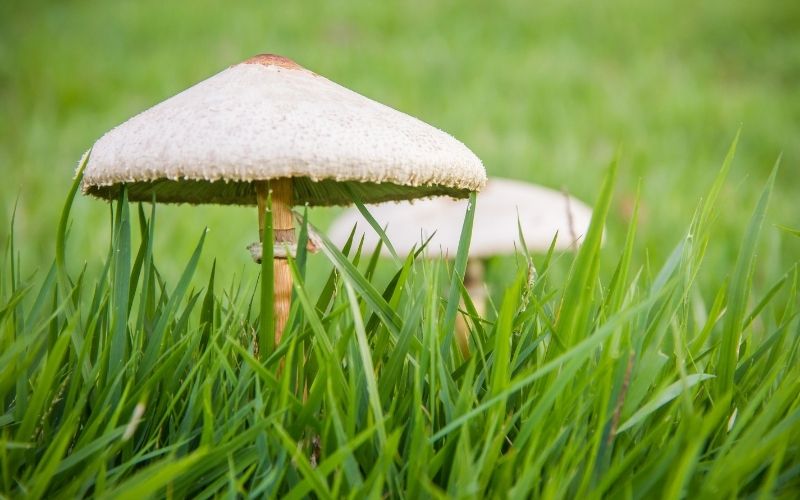
What is the best fungicide to use on brown patch lawn?
When you see the brown patch fungus in the lawn, it’s most often caused by the Rhizoctonia species fungus that is most prevalent in the Fescue lawn. When it infects plants, it causes the stem to get shriveled and fade in color.
It restricts the movement of water and nutrients inside the plant that causes the plant to die. This is most prevalent in a hot temperature between 70°F – 90°F (12°C-32°C), making it highly problematic during the late spring and summer.
A fungicide containing Azoxystrobin or pyraclostrobin controls the brown patch lawn for up to a month. You can try BioAdvanced Disease Prevention liquid fungicide that has Propiconazole as an active ingredient. It protects the lawn for up to 30 days, and a 32-ounce solution can treat up to 5,000 square feet of the yard.
Can you put too much fungicide on your lawn?
You have to be careful when applying fungicide to your lawn. Too much preventative fungicide or control fungicide can either make fungus develop tolerance or damage the lawn plant itself. In addition, fungicides contain chemicals that can be toxic and harmful to the environment.
It may pose a health risk to children and pests if not applied in a manufacturer’s recommended quantity. The best way to apply fungicide is through the fungicide rotation method. In this, you use a particular fungicide for one or two applications and switch to the different fungicide after that.
You can also reapply fungicide every two to three weeks and keep an eye on local disease forecasting to remain a step ahead to apply a protective fungicide.
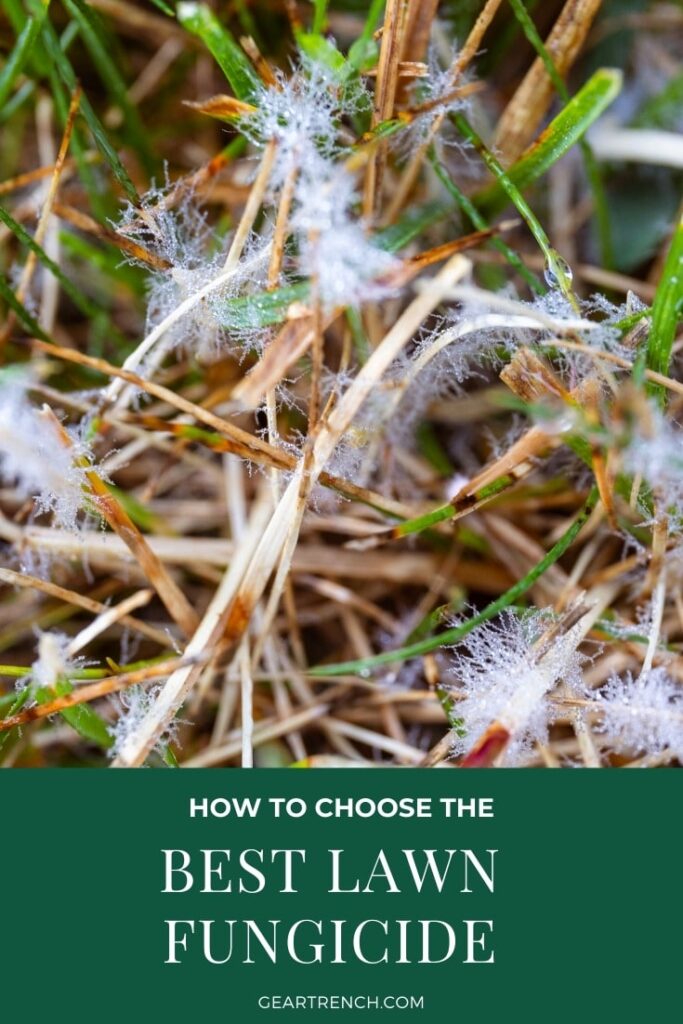
Don’t forget to share this post

